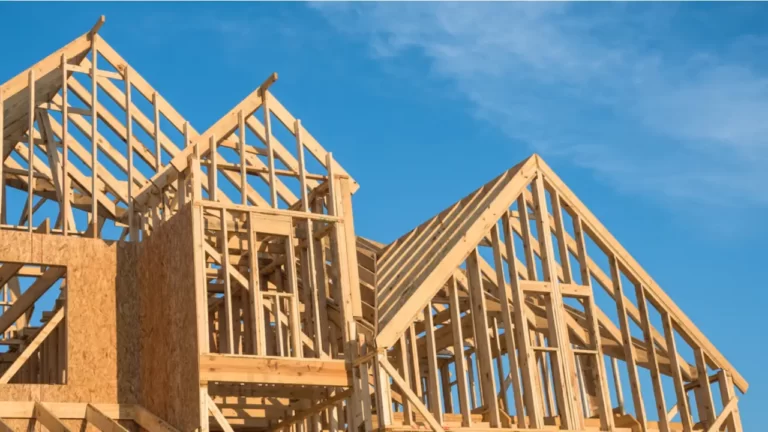Refinancing a mortgage can be a smart financial move for homeowners who want to reduce their monthly payments, shorten their loan terms, or access their home equity. However, one of the biggest hurdles for refinancing is the closing costs, which can add up to thousands of dollars and make the refinance less appealing. Fortunately, some lenders offer a refinance with no closing costs, which can save borrowers a significant amount of money upfront. In this blog post, we’ll explore what a no-closing-cost refinance is and what homeowners should consider before choosing this option.
What is a No-Closing-Cost Refinance?
A no-closing-cost refinance is a type of mortgage refinance where the borrower doesn’t pay upfront fees or charges associated with the refinance. Instead, the lender covers the closing costs by charging a higher interest rate on the loan or by adding the closing costs to the loan balance. In other words, the borrower pays the closing costs over time, rather than upfront.
How Does it Work?
When you refinance with no closing costs, the lender will typically charge a higher interest rate than they would if you were paying the closing costs upfront. This higher interest rate allows the lender to recoup the closing costs over time. While this may result in a slightly higher monthly payment, it can be a good option for homeowners who cannot afford to pay the closing costs upfront.
What to Look for When Considering a No Closing Cost Refinance
When considering a no-closing-cost refinance, there are several factors to keep in mind:
Home Equity and No-Closing-Cost Refinance
One of the main benefits of a no-closing-cost refinance is that it can allow homeowners to tap into their home equity without having to pay for the upfront closing costs. Home equity is the difference between the market value of the property and the outstanding balance on the mortgage. By refinancing with a no-closing-cost option, homeowners can access their home equity and use the funds for home improvements, debt consolidation, or other expenses.
However, it’s essential to note that accessing home equity through refinancing can increase the loan balance and the monthly payment. Homeowners should consider their long-term financial goals and whether a no-closing-cost refinance aligns with them.
Closing Cost Estimator and Lender Fees
While a no-closing-cost refinance can save homeowners money upfront, it’s important to understand that the lender still charges fees and other costs. These include lender fees, such as loan origination fees and underwriting fees, as well as third-party fees, such as appraisal fees, title search fees, and recording fees.
To get an idea of what a refinance will cost, homeowners can use a closing cost estimator tool or get a loan estimate from the lender. This estimate will provide an itemized list of fees and charges associated with the refinance, including the APR (Annual Percentage Rate) and the interest rate.
When considering a no-closing-cost refinance, homeowners should compare the interest rate and APR with other refinancing options to ensure that they’re getting a competitive rate.
Loan Origination Fees and Appraisal Fees
Another factor to consider when refinancing with no closing costs is that the lender may charge a higher interest rate to cover the closing costs. This can result in a higher monthly payment over the life of the loan.
Additionally, if the lender includes the closing costs in the loan balance, the homeowner will pay interest on the closing costs, which can add up over time. It’s essential to understand the long-term financial impact of refinancing with no closing costs and compare the total cost of the loan with other refinancing options.
Home Equity
To qualify for a no-closing cost refinance, you typically need to have a certain amount of equity in your home. Lenders may require anywhere from 5% to 20% equity to qualify.
Closing Cost Estimator
Even though you won’t be paying the closing costs upfront, it’s still important to know how much they will be. A closing cost estimator can help you determine the total cost of the refinance.
Lender Fees
Even with a no-closing cost refinance, lenders may still charge fees such as loan origination fees. Be sure to compare fees from multiple lenders to ensure you are getting the best deal.
Third-Party Fees
In addition to lender fees, there may be third-party fees such as appraisal fees. Make sure to get an estimate of these fees from the lender.
Loan Terms
When refinancing with no closing costs, it’s important to pay attention to the loan terms. A higher interest rate can result in a higher overall cost of the loan.
Prepaid Interest
When you refinance, you typically pay interest from the day of closing until the end of the month. Make sure to factor in prepaid interest when calculating the total cost of the refinance.
Escrow Fees
If you have an escrow account for taxes and insurance, there may be fees associated with transferring the account to the new lender.
Recording Fees and Discount Points
Recording fees are charged by the county or municipality where the property is located to record the new mortgage. Discount points are fees paid upfront to reduce your interest rate. While these fees may not be required for a no-closing cost refinance, it’s important to understand them in case they are added to your loan balance or included in a slightly higher interest rate.
APR and Refinancing Options
When considering a no-closing cost refinance, it’s important to pay attention to the Annual Percentage Rate (APR) of the loan. The APR takes into account not just the interest rate, but also the fees associated with the loan. This can give you a more accurate picture of the true cost of the loan. Additionally, it’s important to explore all of your refinancing options, such as conventional loans, FHA loans, and VA loans, to determine which is best for your financial situation.
Eligibility Requirements and Loan Terms
Finally, it’s important to understand the eligibility requirements for a no-closing cost refinance. In addition to having sufficient home equity, you’ll typically need a good credit score and a low debt-to-income ratio (DTI). It’s also important to consider the loan terms, such as the length of the loan and the interest rate. A no-closing cost refinance may result in a higher interest rate, which could result in higher monthly payments or a longer loan term.
When considering refinancing with no closing costs, it’s essential to compare the interest rate, loan terms, and monthly payments with other refinance options. You can use a refinance calculator to compare the costs and savings of different loan options.
If you have significant home equity, a cash-out refinance may be an option to consider. With a cash-out refinance, you can borrow more than your current mortgage balance and use the extra cash to pay off high-interest debt, make home improvements, or invest in other financial goals. While a cash-out refinance will typically have higher closing costs, it may still be worth considering if you have a long-term financial plan that justifies the upfront costs.
When refinancing with no closing costs, be sure to read the fine print carefully. Some lenders may advertise no closing costs but will still charge fees such as credit report fees, application fees, or prepaid interest. You should also make sure to compare the APR (Annual Percentage Rate) of different loan options, as this takes into account the interest rate and closing costs.
Refinancing your home can be a great way to save money on your monthly mortgage payments, but the closing costs can be a significant burden on your finances. However, there is an option for homeowners to refinance with no closing costs. In this blog post, we’ll explore what it means to refinance with no closing costs, how it works, and if it’s the right choice for you.
Refinancing with no closing costs means that the lender covers the closing costs associated with the refinance. Closing costs can include fees such as the appraisal fee, title search and insurance, origination fees, and others. These fees can range from 2% to 5% of the loan amount, which can add up to thousands of dollars. By refinancing with no closing costs, homeowners can save a significant amount of money upfront.
Conclusion
Refinancing with no closing costs can be an attractive option for homeowners who want to access their home equity or reduce their monthly payments without paying for upfront costs. However, it’s essential to understand the trade-offs of this option, including higher interest rates, larger loan balances, and long-term financial implications. By using a closing cost estimator, comparing loan terms and interest rates, and working with a reputable lender, homeowners can make an informed decision about whether a no-closing-cost refinance is the right choice for them.
(Ensure to check your middle credit score at Middle Credit Score® to avoid the guidelines lenders have regarding having a lower-than-average middle credit score. In today’s market, almost every lender will approve a consumer based on their middle credit score. To avoid lenders that impose higher interest rates, fees, and points; position yourself first at Middle Credit Score® with a strong middle credit score then allow the credit score experts to place you with their Lender affiliates so you win.)







